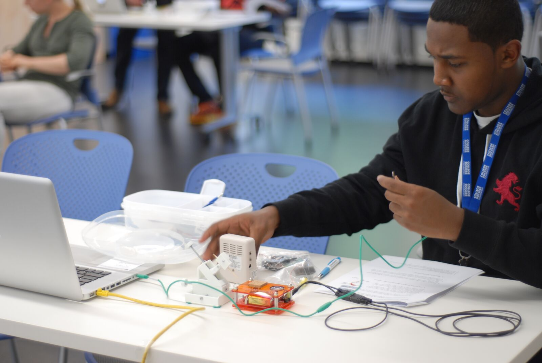Introduction to Neural Engineering: Neuroprosthetics & Brain-Computer Interfaces
A 4-5 Week Curriculum Unit for Middle and High School Science Classes

Grades: Six to 12 STEM classes
This 11-lesson unit, aimed at high school students and advanced middle school students, provides an introduction to the exciting world of neuroprosthetics and brain-computer interfaces.
Using a project-based learning approach, students tackle the skill set of neural engineers—using science, research, technology and programming—to model and improve upon a neuroprosthetic device aimed at helping to improve the quality of life for people with neurological disorders.
The lessons were developed by Claudia Lemus and Angelica Sauceda, TAF Academy (Kent, Wash.), Renee Poitras, Kent-Meridian High School (Kent, Wash.), and Steve Pratt, Cleveland High School (Seattle, Wash.) as part of the CNT Research Experience for Teachers program.
Some of the lessons in this unit require special equipment, including SpikerBoxes, Arduino Unos and electronics.
The unit is available for your use and includes:
- Introduction and Table of Contents
- Lesson 1: Launching the Neuroprosthetics Project
- Lesson 2: Introduction to Systems (Lesson 2 PPT)
- Lesson 3: Reaction Time Lab
- Lesson 4: SpikerBox Lab Part I: Spikes for All
- Lesson 5: Action Potential
- Lesson 6: SpikerBox Lab Part II: Analyzing Spikes
- Lesson 7: Neural Engineering & Brain-Computer Interfaces (Lesson 7 PPT)
- Lesson 8: Introduction to Neuroethics (Lesson 8a PPT | Lesson 8b PPT)
- Lesson 9: Getting to know the Arduino Uno (Lesson 9 PPT)
- Lesson 10: Pugh Charts & Peer Review (Lesson 10 PPT)
- Lesson 11: Online Research & Writing an Abstract< Appendix: Neural Engineering Project Rubric
